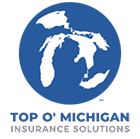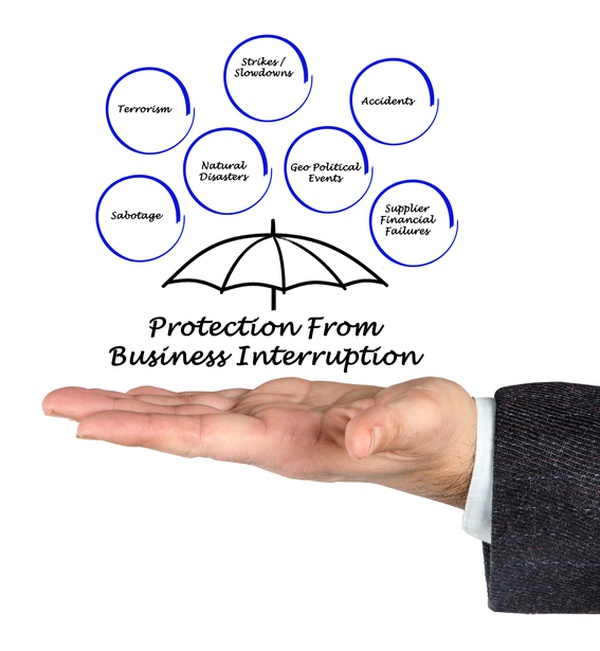Six Steps to Minimize Business Interruptions
Posted:
4 years, 3 months
ago
(0 comments)
According to the Federal Emergency Management Agency, 40 percent of businesses never reopen after a disaster. Implementing steps to prepare for and respond to disasters can help to reduce loss. In order to protect your business from unavoidable interruptions, it is recommended that you have a plan in place.
Having a plan in place serves the following purposes:
- To protect employees and personnel
- To prevent environmental contamination
- To protect revenue, assets and information
- To prevent loss and to contain loss that occurs
- To protect your reputation
How to Minimize Business Interruptions
Here are six steps you can take to help minimize business interruptions:
- Determine the Risk
When determining the potential risks for business interruptions, consider both environmental risks and human risks. Additionally, consider which risks are preventable and which are not.
Once the risks are identified, you can begin to understand all elements involved, such as the hazard itself, the assets at risk, vulnerability to the risk and the ultimate impact of the risk. In order to be best prepared, rank each risk according to the likelihood of occurrence and the severity of impact.
- Calculating the Cost of Interruptions
After the risks have been ranked, analyze the impact of each risk. In calculating cost containment, the following should be considered:
- Lost sales or income
- Increased expenses
- Regulatory fines or contractual penalties
- Delay of business
- Understand Your Insurance Coverage
The next step would be to review your insurance coverage. Business interruption insurance generally comes into effect in the case of one of three circumstances:
- Physical damage to the premises that cause suspended operations;
- Damage to property that is covered by the insurance policy and prevents customers or employees from accessing the business; or
- The government closes an area due to property damage that is covered by the insurance policy and prevents the customers or employees from accessing the business.
Since business interruption coverage can differ significantly, it is important to understand the policy terms, such as exclusions, coverage limits and waiting periods. Coverage is provided for lost net income only for the duration of regaining operation.
- Implementing Steps for Prevention and Mitigation
There are three different approaches for controlling and containing potential hazards:
- Prevention: This method identifies preventable hazards and implements steps to avoid occurrence of the hazards.
- Deterrence: This method identifies potential criminal activities that create business hazards. Steps are taken to prevent the criminal activities.
- Mitigation: This method identifies hazards that cannot be prevented. Steps are taken to control and contain the hazards in case of an occurrence.
- Create a Crisis Communication Plan
Create a crisis communication plan in order to provide employees and customers with updates and critical information. The communication plan should have the following:
- Chain of command: A chain of command allows for information to be shared efficiently and ensures that all personnel receive information.
- Pre-scripted messages: Eliminate confusion by pre-scripting messages that will be shared with customers, employees and the public.
- Bi-directional communication network: Allow for communication to occur in multiple directions in order to efficiently pass information.
- Preparing an Emergency Plan
An emergency plan should be prepared and in place before a hazard occurs. The plan should be practiced and reviewed to ensure the effectiveness of the plan. The plan should include the following elements:
- IT and data recovery: Implement a data backup program to protect and recover important and sensitive information. Create a technology policy that assists in preventing data leaks in the case of telecommuting employees.
- Contracts: Pre-arrange written contracts with other businesses and external suppliers in order to continue fulfilling commitments to customers.
- Resources: Prepare an inventory of resources that are essential to regaining the ability to operate as a business.
- Test: Run a test of the plan to ensure the plan’s success.
How do I calculate how much business income insurance is needed for my business?
Business income insurance (aka business interruption coverage), helps cover lost income and additional expenses when your business is shut down from a covered loss. Let's take a look at what Business Income Insurance covers and how to calculate it.
|
Business income coverage helps cover:
- Taxes. For example, say your small business suffers damages that force you to temporarily close right before your tax payments are due. Your business income insurance can help cover the costs.
- Payroll. For example, say you have five employees that need to get paid while your operation is temporarily shut down. Business income insurance can help cover these payroll costs.
- Utilities. For example, say you need to pay for utilities for the next two months while your business is being repaired. However, you can’t open your operation until after the repairs are finished. Your business income insurance can step in and help pay for your utility bills.
- Lost profits. For example, say your business suffers a major financial loss after being forced to shut down during the holiday season. Your business income insurance can help cover your lost income.
- Advertising. For example, say you owe advertising payments to the company that built your new advertising campaign. However, you recently had to close down your operation to repair damages. Your business income insurance can help cover these advertising costs until you are able to open your business up and make a profit again. Advertising costs may also arise if you must move your business’s location after enduring a covered loss.
- Mortgages or rent. For example, say you rent the building your restaurant is located in. After a fire destroys parts of your restaurant, it needs to be rebuilt. This is expected to take weeks. Your business income insurance can help cover the costs associated.
|
Now that you have a better idea of what is covered by business income insurance, you're probably wondering how to calculate your overall business income. Calculating your business income starts with reporting your gross receipts or sales. This includes all items and services you sell at your business. For example, say you sell computer equipment. Every item you sell would be included in this starting calculation.
To start your business income calculation, follow these steps:
- Calculate your total revenue.
- Subtract your business’s expenses and operating costs from your total revenue. This calculates your business’s earnings before tax.
- Deduct taxes from this amount to find you business’s net income. Your net income will be your business income.
The equation for business income is: Business Income = Revenue - Expenses

|
By taking these steps, it is possible to minimize potential hazards and to limit the impact of hazards. In order to be completely prepared, work with your risk management team or contact Top O' Michigan Insurance today for assistance reviewing and updating your emergency plan.

This Blog/Web Site does not provide insurance or legal advice. This site is for educational purposes only as well as to provide you with general information and a general understanding of insurance, not to provide specific legal advice or specific contract advice. Viewing this site, receipt of information contained on this site, or the transmission of information from or to this site does not constitute a client relationship.
The information on this Blog/Web Site is not intended to be a substitute for professional insurance or legal advice. Always seek the advice of a licensed agent in your state pertaining to insurance and legal issues.
Sources: Zywave, The Hartford
Provided by Top O' Michigan Insurance
This Risk Insights is not intended to be exhaustive nor should any discussion or opinions be construed as legal advice. Readers should contact legal counsel or an insurance professional for appropriate advice. © 2015 Zywave, Inc. All rights reserved.
Share on Facebook



Comments
There are currently no comments
New Comment